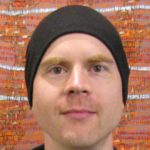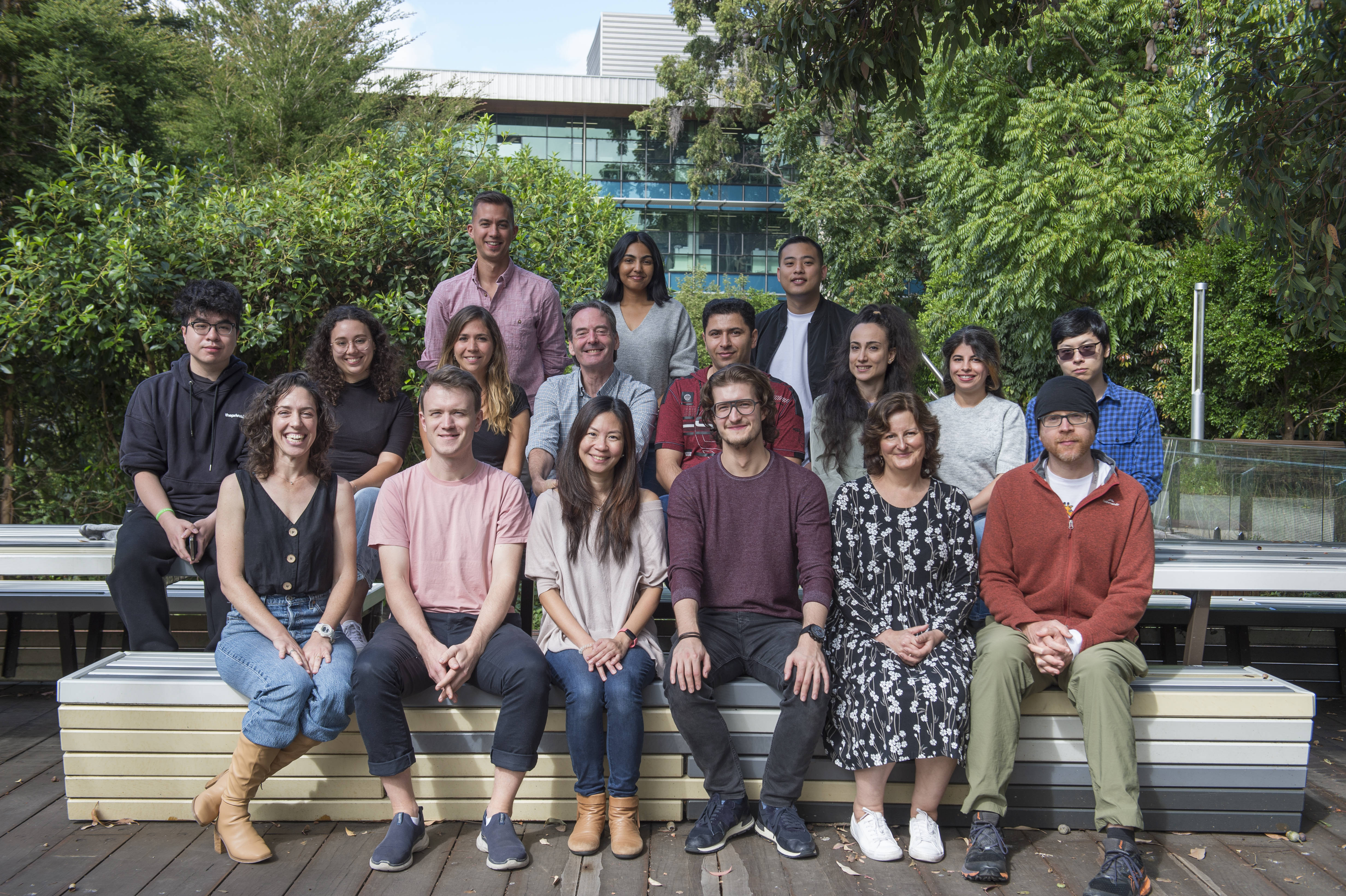The Currie group is curious about the biological mechanisms of the zebrafish, a freshwater fish that is native to South-East Asia. Zebrafish are used in scientific research to understand human genetics and the biological processes of human diseases. They are beneficial because they grow quickly and are optically transparent. The zebrafish embryo is very clear – every cell in the forming embryo can be seen, which make it very easy to work with. It also shares 70 per cent of the genetic code of Homo sapiens.
Research
The Currie group use zebrafish embryos to learn about muscle cell types. In particular, they are interested in how specific muscle cell types are determined within the developing embryo, how they grow and how they regenerate after injury.
Find out about PhD opportunities with the Currie group
Group Members





















Research Themes
- Dissecting molecular mechanisms that act to pattern the vertebrate embryo
- Discovering how specific muscle cell types are determined within the developing embryo
- Discovering how different muscle cell types have evolved
- Determining how muscle types cells grow and regenerate after injury
- Large-scale mutagenesis of the zebrafish genome to produce different classes of mutations which disrupt gene function.
Featured Publications
| Authors | Title | Published In |
|---|---|---|
Ratnayake D, Nguyen PD, Rossello FJ, Wimmer VC, Tan JL, Galvis LA, Julier Z, Wood AJ, Boudier T, Isiaku AI, Berger S, Oorschot V, Sonntag C, Rogers KL, Marcelle C, Lieschke GJ, Martino MM, Bakkers J, Currie PD. |
Macrophages provide a transient muscle stem cell niche via NAMPT secretion |
Nature. 2021 Mar;591(7849):281-287. doi: 10.1038/s41586-021-03199-7. Epub 2021 Feb 10. |
In vivo function of the chaperonin TRiC in α-Actin folding during sarcomere assembly. |
Cell Rep. 2018 Jan 9;22(2):313-322. doi: 10.1016/j.celrep.2017.12.069. |
|
Nguyen PD, Gurevich DB, Sonntag C, Hersey L, Alaei S, Nim HT, Siegel A, Hall TE, Rossello FJ, Boyd SE, Polo JM, Currie PD. |
Muscle stem cells undergo extensive clonal drift during tissue growth via Meox1-Mediated induction of G2 cell-cycle arrest. |
Cell Stem Cell. 2017 Jul 6;21(1):107-119.e6. doi: 10.1016/j.stem.2017.06.003. |
A somitic contribution to the apical ectodermal ridge is essential for fin formation. |
Nature. 2016 Jul 28;535(7613):542-6. doi: 10.1038/nature18953. |
|
Asymmetric division of clonal muscle stem cells coordinates muscle regeneration in vivo. |
Science. 2016 Jul 8;353(6295):aad9969. doi: 10.1126/science.aad9969. Epub 2016 May 19. |
|
Haematopoietic stem cell induction by somite-derived endothelial cells controlled by meox1. |
Nature; 2014 Aug 21;512(7514):314-8. doi: 10.1038/nature13678. Epub 2014 Aug 13. |
More Publications
| Authors | Title | Published In |
|---|---|---|
In vivo imaging: shining a light on stem cells in the living animal. |
Development. 2018 Mar 28;145(7). pii: dev150441. doi: 10.1242/dev.150441. |
|
A low-cost pulse generator for exacerbating muscle fiber detachment phenotypes in zebrafish. |
Zebrafish. 2018 Jan 30. doi: 10.1089/zeb.2017.1512. |
|
Mutations in the Katnb1 gene cause left-right asymmetry and heart defects. |
Dev Dyn. 2017 Dec;246(12):1027-1035. doi: 10.1002/dvdy.24564. Epub 2017 Sep 5. |
|
Phosphorylation of Lbx1 controls lateral myoblast migration into the limb. |
Dev Biol. 2017 Oct 15;430(2):302-309. doi: 10.1016/j.ydbio.2017.08.025. Epub 2017 Aug 24. |
|
Dudczig S, Currie PD, Jusuf PR. |
Developmental and adult characterization of secretagogin expressing amacrine cells in zebrafish retina. |
PLoS One. 2017 Sep 26;12(9):e0185107. doi: 10.1371/journal.pone.0185107. eCollection 2017. |
Goodings L, He J, Wood AJ, Harris WA, Currie PD, Jusuf PR. |
In vivo expression of Nurr1/Nr4a2a in developing retinal amacrine subtypes in zebrafish Tg(nr4a2a:eGFP) transgenics. |
J Comp Neurol. 2017 Jun 1;525(8):1962-1979. doi: 10.1002/cne.24185. Epub 2017 Mar 15. |
Ratnayake D, Currie PD. |
Stem cell dynamics in muscle regeneration: Insights from live imaging in different animal models. |
Bioessays. 2017 Jun;39(6). doi: 10.1002/bies.201700011. Epub 2017 Apr 25. |
Tulenko FJ, Massey JL, Holmquist E, Kigundu G, Thomas S, Smith SME, Mazan S, Davis MC. |
Fin-fold development in paddlefish and catshark and implications for the evolution of the autopod. |
Proc Biol Sci. 2017 May 31;284(1855). pii: 20162780. doi: 10.1098/rspb.2016.2780. |
Berger J, Berger S, Li M, Currie PD. |
Myo18b is essential for sarcomere assembly in fast skeletal muscle. |
Hum Mol Genet. 2017 Mar 15;26(6):1146-1156. doi: 10.1093/hmg/ddx025. |
Dudczig S, Currie PD, Poggi L, Jusuf PR. |
Muscular dystrophy modeling in zebrafish. |
Methods Cell Biol. 2017;138:347-380. doi: 10.1016/bs.mcb.2016.11.004. Epub 2016 Dec 29. |
Nguyen PD, Currie PD. |
Using Transgenic Zebrafish to Study Muscle Stem/Progenitor Cells. |
Methods Mol Biol. 2017;1556:117-125. doi: 10.1007/978-1-4939-6771-1_6. |
Kei JNC, Currie PD, Jusuf PR. |
Fate bias during neural regeneration adjusts dynamically without recapitulating developmental fate progression. |
Neural Development 2017;12:12. doi: 10.1186/s13064-017-0089-y. |
Kei JN, Dudczig S, Currie PD, Jusuf PR. |
Feedback from each retinal neuron population drives expression of subsequent fate determinant genes without influencing the cell cycle exit timing. |
J Comp Neurol. 2016 Sep 1;524(13):2553-66. doi: 10.1002/cne.23976. Epub 2016 Mar 1. |
Don EK, de Jong-Curtain TA, Doggett K, Hall TE, Heng B, Badrock AP, Winnick C, Nicholson GA, Guillemin GJ, Currie PD, Hesselson D, Heath JK, Cole NJ. |
Genetic basis of hindlimb loss in a naturally occurring vertebrate model. |
Biol Open. 2016 Feb 18;5(3):359-66. doi: 10.1242/bio.016295. |
Tarakci H, Berger J. |
The sarcoglycan complex in skeletal muscle. |
Front Biosci (Landmark Ed). 2016 Jan 1;21:744-56. doi: 10.2741/4418 |
Gurevich D, Siegel A, Currie PD. |
Skeletal myogenesis in the zebrafish and its implications for muscle disease modelling. |
Results Probl Cell Differ. 2015;56:49-76. doi: 10.1007/978-3-662-44608-9_3. |
Berger J, Hall TE, Currie PD. |
Novel transgenic lines to label sarcolemma and myofibrils of the musculature. |
Zebrafish 2015;12(1):124-125. doi: 10.1089/zeb.2014.1065. Epub 2015 Jan 2. Impact Factor: 1.946. Ranking: 33/153. |
Goldshmit Y, Frisca F, Kaslin J, Pinto AR, Tang JK, Pébay A, Pinkas-Kramarski R, Currie PD. |
Decreased anti-regenerative effects after spinal cord injury in spry4-/- mice. |
Neuroscience. 2015 Feb 26;287:104-12. doi: 10.1016/j.neuroscience.2014.12.020. Epub 2014 Dec 22. |
Wood AJ, Currie PD. |
Analysing regenerative potential in zebrafish models of congenital muscular dystrophy. |
Int J Biochem Cell Biol. 2014 Nov;56:30-7. doi: 10.1016/j.biocel.2014.10.021. Epub 2014 Oct 28. |
Masselink W, Wong JC, Liu B, Fu J, Currie PD. |
Low-cost silicone imaging casts for zebrafish embryos and larvae. |
Zebrafish. 2014 Feb;11(1):26-31. doi: 10.1089/zeb.2013.0897. Epub 2013 Nov 15. |
Berger J, Tarakci H, Berger S, Li M, Hall TE, Arner A, Currie PD. |
Loss of Tropomodulin4 in the zebrafish mutant träge causes cytoplasmic rod formation and muscle weakness reminiscent of nemaline myopathy. |
Dis Model Mech; 2014 Dec;7(12):1407-15. doi: 10.1242/dmm.017376. Epub 2014 Oct 2. |
Gurevich D, Siegel A, Currie PD. |
Skeletal myogenesis in the zebrafish and its implications for muscle disease modelling. |
Results Probl Cell Differ. 2015;56:49-76. doi: 10.1007/978-3-662-44608-9_3. |
Goldshmit Y, Frisca F, Pinto AR, Pébay A, Tang JK, Siegel AL, Kaslin J, Currie PD. |
Fgf2 improves functional recovery-decreasing gliosis and increasing radial glia and neural progenitor cells after spinal cord injury. |
Brain Behav. 2014 Mar;4(2):187-200. doi: 10.1002/brb3.172. Epub 2014 Jan 13. |
Siegel AL, Gurevich DB, Currie PD. |
A myogenic precursor cell that could contribute to regeneration in zebrafish and its similarity to the satellite cell. |
FEBS J. 2013 Sep;280(17):4074-88. doi: 10.1111/febs.12300. Epub 2013 May 24. |
Cole NJ, Hall TE, Don EK, Berger S, Boisvert CA, Neyt C, Ericsson R, Joss J, Gurevich DB, Currie PD. |
Development and evolution of the muscles of the pelvic fin. |
PLoS Biol. 2011 Oct;9(10):e1001168. doi: 10.1371/journal.pbio.1001168. Epub 2011 Oct 4. |
Nguyen-Chi ME, Bryson-Richardson R, Sonntag C, Hall TE, Gibson A, Sztal T, Chua W, Schilling TF, Currie PD. |
Morphogenesis and cell fate determination within the adaxial cell equivalence group of the zebrafish myotome. |
PLoS Genet. 2012;8(10):e1003014. doi: 10.1371/journal.pgen.1003014. Epub 2012 Oct 25. |
Sztal TE, Sonntag C, Hall TE, Currie PD. |
Epistatic dissection of laminin-receptor interactions in dystrophic zebrafish muscle. |
Hum Mol Genet. 2012 Nov 1;21(21):4718-31. doi: 10.1093/hmg/dds312. Epub 2012 Jul 31. |
Johnson JL, Hall TE, Dyson JM, Sonntag C, Ayers K, Berger S, Gautier P, Mitchell C, Hollway GE, Currie PD. |
Scube activity is necessary for Hedgehog signal transduction in vivo. |
Dev Biol. 2012 Aug 15;368(2):193-202. doi: 10.1016/j.ydbio.2012.05.007. Epub 2012 May 17. |
Lieschke GJ, Currie PD. |
Animal models of human disease: zebrafish swim into view. |
Nat Rev Genet. 2007 May;8(5):353-67. doi: 10.1038/nrg2091 |
Hollway GE, Bryson-Richardson RJ, Berger S, Cole NJ, Hall TE, Currie PD. |
Whole-somite rotation generates muscle progenitor cell compartments in the developing zebrafish embryo. |
Dev Cell. 2007 Feb;12(2):207-19. doi: 10.1016/j.devcel.2007.01.001 |
Cortés F, Daggett D, Bryson-Richardson RJ, Neyt C, Maule J, Gautier P, Hollway GE, Keenan D, Currie PD. |
Cadherin-mediated differential cell adhesion controls slow muscle cell migration in the developing zebrafish myotome. |
Dev Cell. 2003 Dec;5(6):865-76. doi: 10.1016/S1534-5807(03)00362-9 |
Neyt C, Jagla K, Thisse C, Thisse B, Haines L, Currie PD. |
Evolutionary origins of vertebrate appendicular muscle. |
Nature. 2000 Nov 2;408(6808):82-6. https://www.nature.com/articles/35040549 |




